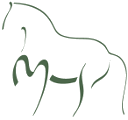The aids
As I am a dressage riders it is easy to think about the aids as small symbolic commands given in an arena to make the horse dance with us. But it also require aids to bring a scary horse out of one of those burning forests in California. In a situation as extreme as that it is much more important that the horse accepts and obeys the aids than what it is on a pleasant ride on the arena.
Both situations have one thing in common: The horse will follow us and do what we want if we can convince him it is a good idea. Maybe that is my first advice in how to teach the aids: Make the horse consider it a good idea to obey.
Writing that, many many readers will presume I mean to use violence. I am old enough to know that violence is no the best way. There is certain situations where violence is acceptable, but we can save that till later.
So how do I get the horse to follow me and obey? Well, in many ways that is just as raising kids, or making a girl wanting to dance with me: They must find me safe, wise and nice to companion.
There we have the base for making the horse follow us out of the burning forest: He must trust me enough for it. We can get him out there with violence, but trust makes it easier.
Now let's leave the leadership thing and go into the aids.
Isn't it funny that in most languages I have investigated the word for the aids is, just as in English, a word for aiding, helping, supporting, assisting … No language seem to use a word for control, domination or submission when describing our communication with the horse. In Swedish and German we use the equivalent of the word “help” as the word for the aids. In the non Indogermanic Finnish language they use the word “Avut”, meaning something like support, for the aids.
As long as we talk about more pleasant riding than a forest fire, I think it is wonderful that the aids has a word for supporting the horse to do what we want. Isn't it?
Since the NH movement started 25 years ago we have been taught that the horse shall walk away from pressure and that has been how the reaction of the aids has been explained to us: The horse shall walk away from the aid. For some aids that is true, but for other it is not. How do the horse walk away from a tongue click or a whoa? And if we teach the horse to move away from our weight he'll be impossible to mount as when we put the foot in the stirrup and add some weight in it he'll move away …
So it is not as simple as the horse shall learn to move away from pressure. I have identified three different and independent aids system where only one works with the “move away from pressure”-idea.
